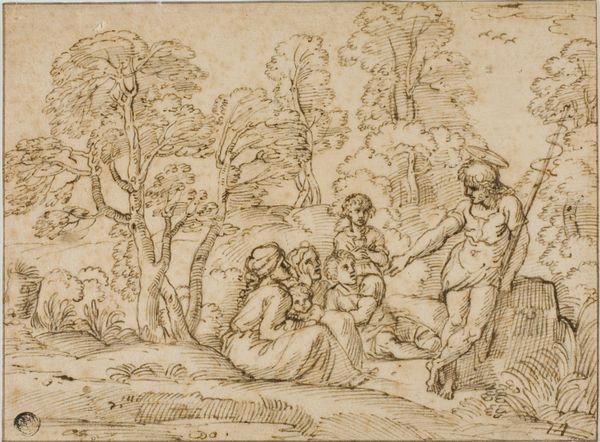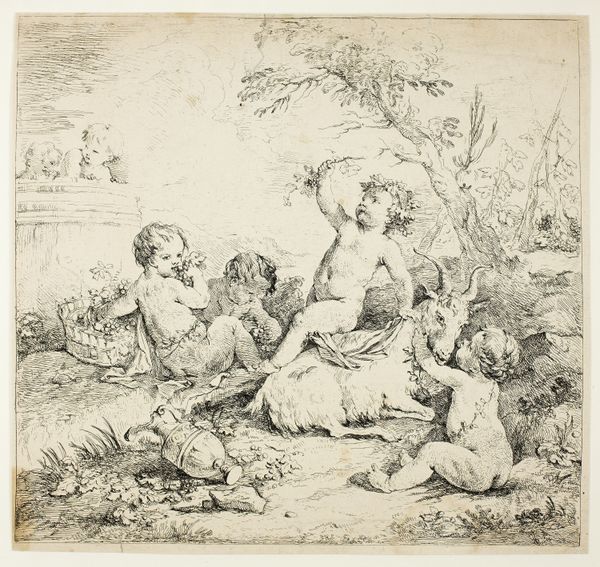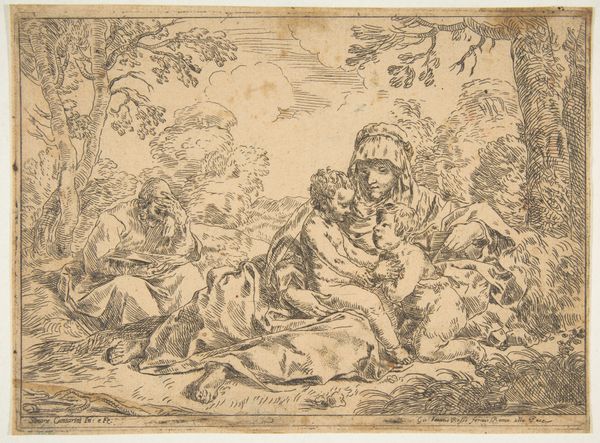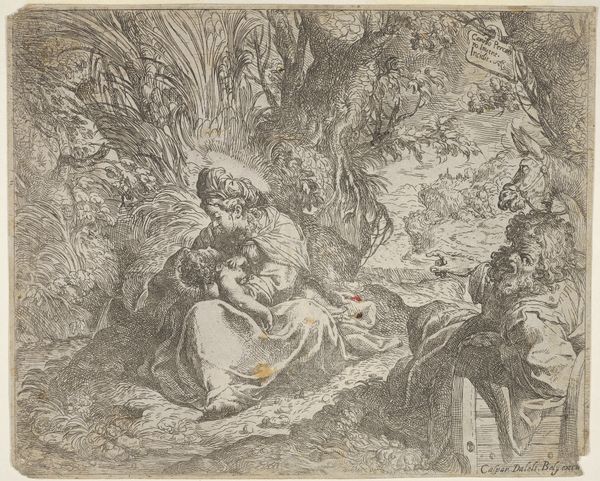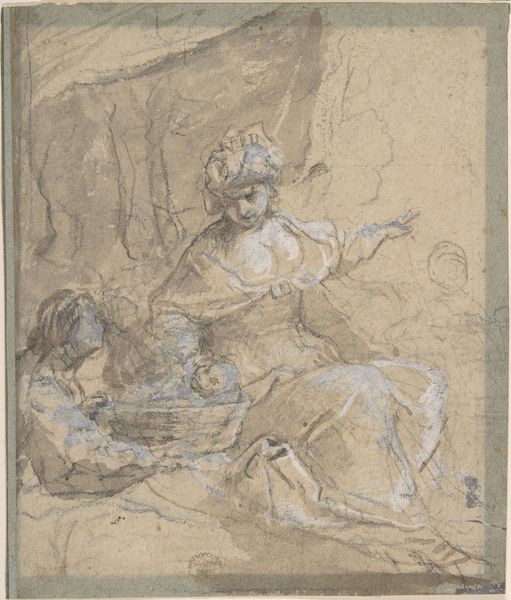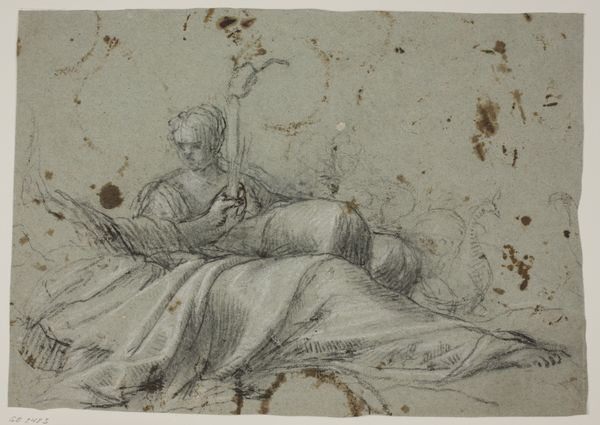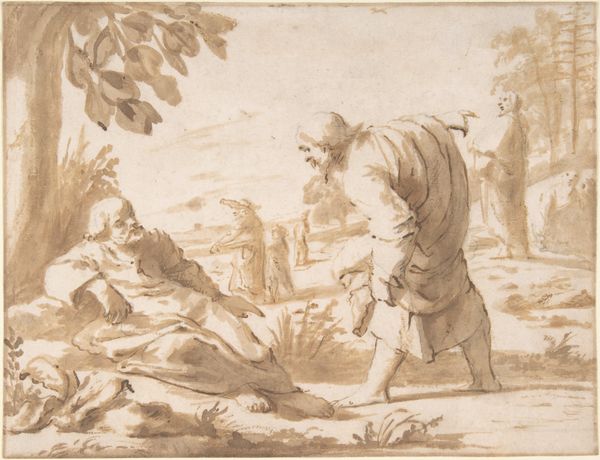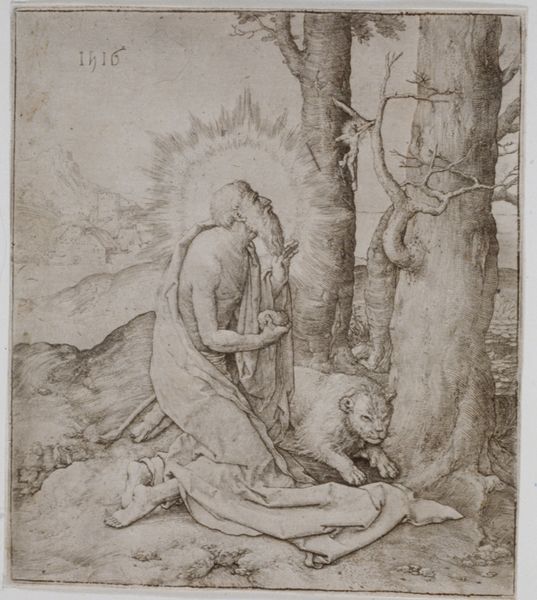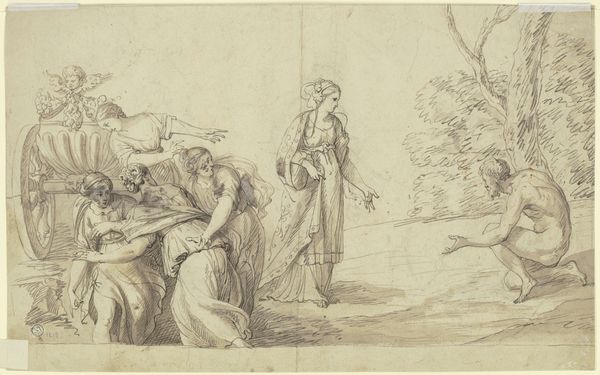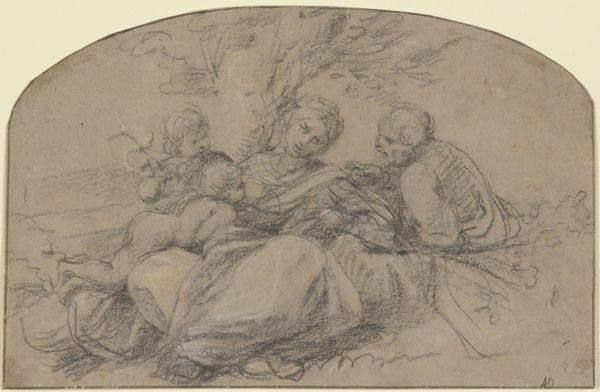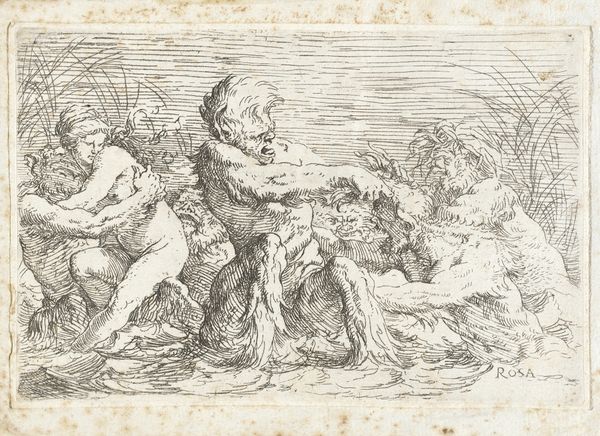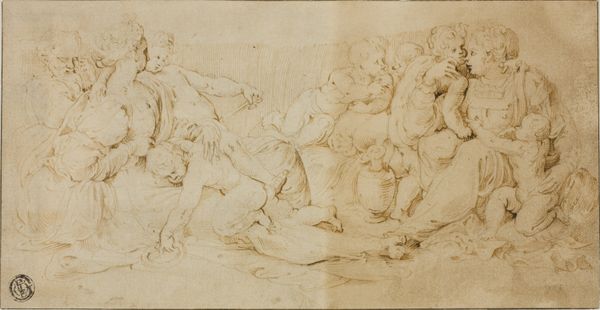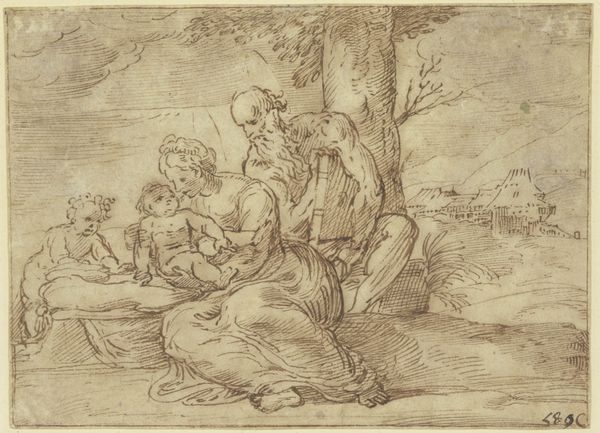
Knælende ridder plejer en liggende ridder, såret i turnering; t.v. en hest set bagfra, i baggrunden en borgruin på en høj 17th century
0:00
0:00
drawing, ink
#
drawing
#
narrative-art
#
baroque
#
ink painting
#
figuration
#
ink
#
history-painting
Dimensions: 125 mm (height) x 180 mm (width) (bladmaal)
Curator: What immediately strikes me about this ink drawing from the 17th century is its palpable sense of vulnerability. Editor: Indeed, a rather melancholic tone is established by the sparse yet frantic lines of ink. You sense a great urgency in this moment of suffering. Curator: We’re looking at "Knaelende ridder plejer en liggende ridder, såret i turnering; t.v. en hest set bagfra, i baggrunden en borgruin på en høj,” an ink drawing made in the 17th century by Juergen Ovens. Editor: It feels like a medieval Pieta; such pathos in this caring knight tending to his fallen comrade. I’m interested in the imagery and the symbolism associated with knighthood and these figures of protection. It's particularly potent because these were often very violent power structures at work in the time. The horse and ruined castle in the background feel loaded with cultural weight as well. Curator: Absolutely. Examining the artwork from a feminist lens, there’s a profound commentary embedded in this image on masculinity, touching upon both fragility and care. Male intimacy during that era often existed within a strict, hierarchical code but images of men tending to each other open discussions about vulnerabilities and affection outside that societal structure. Editor: The cup the standing knight holds…what might that represent in this context? Is it life-giving, perhaps a holy chalice offering some form of redemption, perhaps not only physically? Or is it symbolic for a need to nourish a damaged warrior, as the drawing perhaps acts as a symbolic record. Curator: Perhaps. This narrative extends beyond the purely literal, raising vital inquiries regarding camaraderie, allegiance, and even sacrifice. Was this a widely discussed topic during Ovens time, and, if so, who was privy to view such vulnerable moments? Editor: Interesting question. It does prompt a meditation on power, protection, and even sacrifice. This imagery acts almost like a historical anchor, preserving collective ideas. Curator: Exactly. By layering these multiple social readings with art-historical contexts, we move toward a more comprehensive understanding of how themes of gender, class and politics intersect through art. Editor: Ultimately, an evocative testament to human connections, both visual and emotional. Curator: Yes, a powerful piece prompting consideration of historical interpretations and social perspectives through something as essential as shared experiences.
Comments
No comments
Be the first to comment and join the conversation on the ultimate creative platform.

